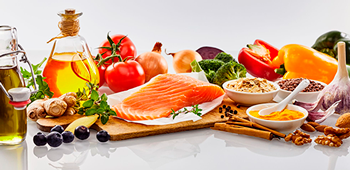
There’s a very widespread notion that certain types of food, specifically desserts, sugary snacks and beverages, are addictive. This notion is so popular, that, on average, 28 people a week googled the phrase “sugar addiction” during the last year in the United States [1]. And people get more concerned about this issue on holiday seasons, where family outings and party events tempt us with delicious foods and pastries.
For instance, on the week of December 20 to 26, 2020, 100 people on the United States looked for “sugar addiction” on the internet. And when you input this query on Google, you’ll find there are more than 40 million hits available about this subject!
The concern about sugar addiction is very justified. Surely, we’ve all felt a sense of glee and delight when we eat a sugary dessert. Think about how we take pleasure on chocolate or ice cream, for instance, when we are feeling down or anxious. Some people even find a hard time cutting on sugary meals when they have embarked on a trend of eating high amounts of daily sugar.
But can excessive sugar consumption really trigger an addiction? If so, how dangerous is it and how can we overcome it? Is sugar addiction somehow related to obesity? We will tell you everything you need to know about sugar addiction here.
But first, let’s talk about sugar. It turns out not every sugar is the same and they all produce different reactions in our body and brain. While they are some sugars that we must certainly avoid, there are many others that are even a healthy ingredient of our diet.
Understanding sugars
Sugars are carbohydrates, a macronutrient that is one of the three basic food groups (fats, proteins and carbohydrates), which are a fundamental part of every healthy diet. Carbohydrates contain carbon, hydrogen and oxygen and are the body’s main source of energy.
They provide energy for the muscles and the central nervous system, and they stimulate the brain’s functions.
There are three very different types of carbohydrates: sugars, starches and fiber. Sugars are naturally found in fruits, some vegetables, milk and milk products; and they are also added in pastries, candies, beverages and syrups.
Sugars are classified in:
- Simple (monosaccharides), which contain just 1 or 2 sugars, like:
- Glucose
- Galactose (found in milk products)
- Fructose (found in fruits)
- Disaccharides, which contain 2 sugars, like:
- Sucrose (table sugar)
- Lactose (found in milk)
- Maltose (found in some vegetables and beer)
- Complex sugars, which contain 3 or more sugars, and include oligosaccharides and polysaccharides, have longer carbohydrate chains. They are found in beans, whole grains, vegetables, rice, pastas, and breads, and contain vitamins, fiber, and minerals.
Carbohydrates break into simple sugars, like glucose or fructose so they can be absorbed by the body, although these go through very different processes to do so.
- Glucose is absorbed directly into muscle and adipose tissues, via the aid of insulin, where it is used to generate energy. It also has a more direct pathway into the brain through the bloodstream [2].
- Fructose is absorbed first into the liver where it is converted to glucose, lactate or fatty acids, and then passed into the bloodstream from where it generates energy [2].
Risks of very high sugar consumption
If the glucose is not needed immediately for generating energy, the body can store up to 2,000 calories of it in the liver and skeletal muscles in the form of glycogen. Once the storage of glycogen is full, these carbs are then stored as fat [3]. An excessive consumption of sugar can then lead to:
- Undesired weight gain
- Obesity
- Diabetes
- Cardiometabolic disease
And how exactly can sugars be addictive?
Fructose has been regarded as a potentially more addictive sugar than glucose because it diminishes the circulation of satiety hormones like insulin and glucagon-like polypeptide, and at the same time it increases the levels of the appetite hormone, ghrelin. So, fructose increases the chances of overconsumption of calories because it stimulates appetite and delays satiety. This has led to the suspicion that fructose might increase food-seeking behaviors and food intake [2]. Examples of this is the development of frequent food cravings and the habit of binging.
The problem is that nowadays many processed foods and soft drinks available in the American market are sweetened with high-fructose corn syrup, which increases our chances of eating way more sugars than we need and potentially developing a very high preference for sugary meals.
On the other hand, the effects that sugars produce on our body and brain are usually satisfying and highly rewarding. The consumption of foods rich in sugar has been associated with increased secretion of acetylcholine and dopamine in the nucleus accumbens [3]. Dopamine is a type of neurotransmitter that produces a sense of pleasure, tranquility, and in some cases euphoria. So, if we experience a great sense of pleasure when we eat a pastry or chocolate, odds are that we might want to experience it again in a later meal.
However, it is important to mention that the potentially addictive qualities of food don’t rely solely on sugars. Sugar addiction is understood as a very specific type of food addiction, and truth of the matter is that no food is solely made up of sugars. They are usually a combination of other ingredients and food groups. Sugar has been portrayed as a public enemy #1… but they actually aren’t.
The most potentially addictive kind of food is that which combines sugar and fat. For instance, cookies, brownies, chocolate, cake, and ice cream —which are commonly acknowledged like sugary foods— usually have a higher percentage of fat than they do of sugar. Only candy by itself contains mostly sugar [4].
In conclusion, the problem about food addiction is not mainly about sugar itself, but about highly palatable foods. Other foods that have been considered to be potentially addictive because of the food cravings they inspire are high on fat, like salty chips, pretzels, crackers, bacon, hamburgers, pizza, French fries, bread, and pasta.
Sugar addiction doesn’t behave like “regular” addictions
Sugar addiction has been compared to be as rewarding and dangerous as a drug addiction, but this is not exactly true. The pleasurable sensation that sugars produce in the body is more comparable with other pleasurable experiences like winning a game or a prize, being in love, seeing an attractive face or hearing great humor [4]. Evidence of this is the fact that sugar addiction doesn’t behave like a “regular” addiction.
For instance, in a drug addiction, the body gains more tolerance to the substance with every fix, which triggers the need to higher the dosage exponentially. This doesn’t happen with a sugar or food addiction. With sugar addiction, the trend is more of a U shape. The urge of eating increments up to a point where it settles and then it starts to gradually decrease. In this scenario, people compelled to eating tend to transfer to another palatable food instead and start the cycle again.
Break the cycle of sugar addiction
- Clean your kitchen from any temptation. Don’t stock your pantry with snacks or sugary foods. Making these sweet meals difficult to reach will help you fight your impulses.
- Replace processed foods for fruits and healthy snacks. You don’t need to avoid every type of sugar in your diet, you just need to be more selective. If you are feeling a food craving, try eating a fruit or a healthy snack instead of candy, sweets or processed foods.
- Don’t rely on artificial sweeteners either. Artificial sweeteners are not a free pass to eating sugar. These are just as harmful as natural sweeteners if consumed in excess.
- Don’t drink your calories. Drinking soda, juices, frappes, smoothies or sweet cocktails all contribute to your daily calorie count. It is better to avoid sugary beverages.
- Drink plenty of water. Drinking water doesn’t add calories to your diet and it also tames your appetite. Always prefer water for your hydration instead of sodas, juices or coffees.
- Eat slowly. Eating at a slower pace will make you enjoy your food more and it will help your body to signal satiety on time. This will prevent you from engulfing your food and binging.
- Take care of yourself. Manage your stress and anxiety by dedicating time for yourself. Meditation and exercise can help to keep you centered.
- Sleep your 8 hours a day. Sleeping well helps with your mood, stress, and energy management, which also contributes for better decision making. Keeping yourself fresh and focus can help you avoid unhealthy habits. /li>
Contact us today
If you would like to know more about the risks of overeating and available treatments, contact LIMARP International Center of Excellence for obesity today. Our team of experts will be glad to help.
References
- [1] Google Trends (August 10, 2021). “Sugar addiction”. https://trends.google.es/trends/explore?geo=US&q=sugar%20addiction
- [2] Onaolapo, A. Y.; Olakunle, J. O. & Olowe, O. A. (2020). An overview of addiction to sugar. Dietary Sugar, Salt and Fat in Human Health. https://www.sciencedirect.com/science/article/pii/B9780128169186000093
- [3] Szalay, J. (2017). What are carbohydrates? LiveScience. https://www.livescience.com/51976-carbohydrates.html
- [4] Benton, D. (2009). The plausibility of sugar addiction and its role in obesity and eating disorders. Clinical Nutrition, 29(2010): 288-303. https://pubmed.ncbi.nlm.nih.gov/20056521/


